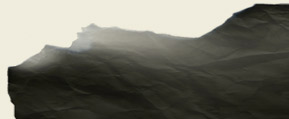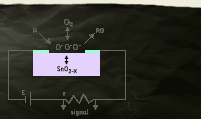| |
Julie AULT
Catherine DAVID
Catherine FURET
Krist GRUIJTHUIJSEN & Johan LUNDH
Jan KOPP
Emmanuel LOUISGRAND
Pierre MAHEY
Viktor MISIANO
Nils NORMAN
Melik OHANIAN
Florian SCHNEIDER
Stefan TIRON |
From : <ecole@magasin-cnac.org>
Sent : Wednesday, March 15, 2006 1:04 PM
To : Simone Forti
Subject : Request for a conversation by mail
Dear Simone Forti,
I am one of the students at the École du Magasin in Grenoble who organized the exhibition Danser l’actualité which coincided with your visit to Grenoble in November. I am writing to you as I would very much appreciate it if you would have the time to reply to an inquiry concerning audience participation. Your reply will be posted on our project website along with other responses from various artists and critics on the question of participation.
Lore
From : Simone Forti
Sent : Monday, April 17, 2006 1:07 AM
To : <ecole@magasin-cnac.org>
Subject : Re:Request for a conversation by mail
Dear Lore Gablier,
I'm sorry it has taken me so long to answer these questions. But for me, now was the right time when I could do it. I have inserted my answers after each question. I wish you best of luck with your project,
Simone
> How would you describe your experience with audience participation — notably as a result of your “dance constructions,” which require no specialized knowledge or training as a dancer in order to perform them?
The dance constructions were concerned with movement rather than with dance in a traditional sense. They were influenced by the music of John Cage, by the photographs of Eadweard Muybridge and the work of the Japanese Gutai group of artists who extended their painting and sculpture into environments and into actions pieces. The dance constructions are not pieces for the stage and their relationship to the audience is more like sculpture in that they share the space with the audience who is free to walk around them, view them from close up or from a distance. Only once, at an outdoor festival, after a performance of Huddle, each performer taught the piece to a group of audience members, thus making six or seve second generation Huddles. Otherwise, the audience was never expected to join in the huddle.
> Did you, or do you, consider them as a form of democratization of dance?
I don't think the dance constructions were especially democratic. In fact think the general public probably prefers to see more traditional dance or sculpture. It's true that performing them does not require physical training, but it does require an orientation to a "natural" or pedestria style of performance.
> Given that the “dance constructions” were written in the early 1960s and were followed by various attempts by other artists to work in ways that were no longer based on the specialized knowledge and techniques of the performing arts of dance and music, etc., do you think that such attempts are still possible in the less utopian times in which we live today?
I think that the pieces of the 1960 were indeed based on specialized knowledge, for instance knowledge of the work and philosophy of John Cage. It's true that the 1960s were more utopian. I see many performance artists now working with questions of cultural identity. In a way, that's more democratic. I'm sure some of them are using pedestrian movement. But the rigor of the work is in its concept and in its clarity. Not necessarily in specialized training for virtuostic movement. I think an important point to remember is that those works of the 1960s which are well known in art circles today, were being done in small, informal places and with no support from any institutions. I am sure that underground work which explores newly urgent questions is alive and well today.
From : <ecole@magasin-cnac.org>
Sent : Friday, May 5, 2006 2:50 PM
To : Simone Forti
Subject : After a long silence
Dear Simone Forti,
Please excuse me for my delay in answering your mail and thank you so kindly for accepting to reply with such exactitude to my questions. If you would accept I would be most grateful if we could continue our interview. I was surprised by your reply as until now I had considered the dance-constructions as a participatory form. I have a vivid memory of you working with the students on Huddle during your visit to Grenoble. It then seemed to me that Huddle in particular represented a collective aesthetic experience. But perhaps it is less an explicit participatory form than an implicit one. Does participation thus entail the idea that each person may become an author or an interpreter? What do you think about this?
I recently visited Anna Halprin’s exhibition at the Contemporary Art Museum in Lyon. I was particularly intrigued by her use of RSVP (Resource, Score, Value, Performance). Have you yourself experimented with this working method? How do you see the place of collaboration in your work?
Your sincerly,
Lore
From : Simone Forti
Sent : Tuesday, May 9, 2006 9:30 AM
To : <ecole@magasin-cnac.org>
Subject : Re: After a long silence
Dear Lore,
For the performance of Huddle we gathered students concerned with contemporary art and did a workshop training with them in preparation. This training, though short, included exercises to awaken physical awareness, to learn an attitude of trust in simple directness of movement as well as to practice the rudimentary techniques necessary to performing the piece. The training conveyed the precise aesthetic and intention o the piece so that the comportment or "presence" of each performer contributed to the intended gestalt. I would not have tried to perform Huddle without selecting the community from which to find performers and without at least a few hours of training. Yes, it was a collective aesthetic experience in that together we followed the precise instructions to achieve an aesthetic result. And each person, rather than becoming an author or interpreter, followed the instructions that helped us, together, to perform a very specific piece with a specific form and specific action and duration. Yes, of course Huddle embraces the natural, untrained body. But I'm afraid it's a minimalist, conceptual piece.
I never have worked with Anna's RSVP cycle. She developed it after I had moved away. I do always have a talking session after an activity, but I have not codified it. It's a chance for anyone who wishes, to express any thoughts and for everyone to become more aware of their thoughts and to let the experience solidify a bit.
About collaboration, for the past several decades I have been working with what I would call structured improvisation. When I work with a group, I create the structure and I am the director, which takes a form very much like leading a workshop. This leaves a lot of room for each performer to improvise within the structure. I have been working with three other performers on improvisational pieces using moving and speaking. Each of us develops an area of interest and the work depends on the idea that any four topics will have ways that they engage with each other. The pieces are interactions between us through the medium of our chosen topics. This freedom demands a lot of structuring, which we discuss together, but in these pieces I have brought the concept and have the final responsibility as director. Otherwise, I have often collaborated as a solo dancer with a musician.
It's nice to be communicating with you.
Sincerely,
Simone
|




